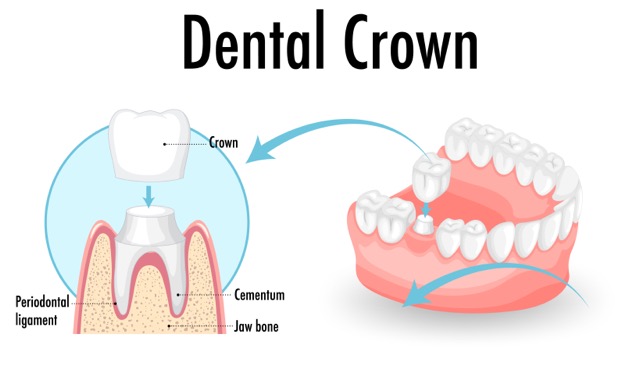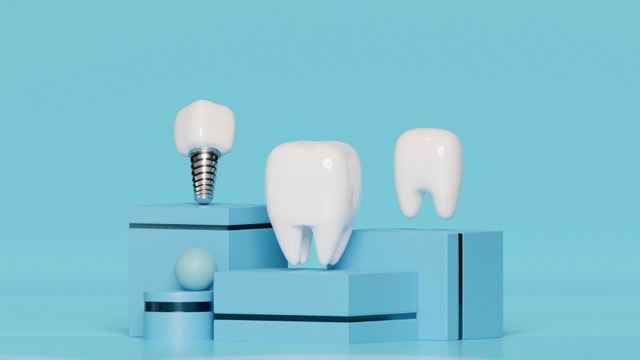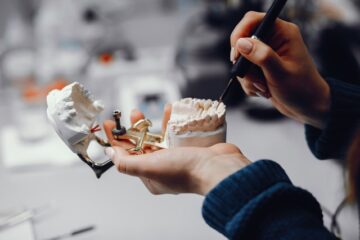How Long Do Dental Crowns Last?

Contents

Dental crowns address a variety of dental issues. These structures mimic the natural shape of a tooth. A crown is secured on top of a problematic tooth, which is treated beforehand.
This is done to preserve the root part of the tooth, in cases where the outer portion is partially damaged by cavities or other injuries. Sometimes, dental crowns are placed on healthy teeth (which are first filed down) to enhance the aesthetics of a smile, making teeth appear more even, white, and beautiful.
In addition to their aesthetic function, dental crowns:
- Efficiently perform the primary function of teeth, helping to grind food. This not only reduces the strain on adjacent teeth but also aids in the digestion process.
- Fully occupy the space of a damaged tooth in the dental row and prevent neighboring teeth from shifting or becoming misaligned.
Lifespan of Dental Crowns
“Do crowns last forever?” This is the first question most people ponder when considering dental crowns. To answer promptly, while dental crowns are long-lasting, they are temporary structures. Their lifespan depends on the chosen crown material, the nature of the problem they address, hygiene habits, and most importantly, their daily usage patterns. So, how long do dental crowns last?
On average, the service life of dental crowns is 10-15 years. This is typically how long it takes before a replacement becomes necessary. However, these are relative figures, as the longevity of such permanent dental prosthetics mainly depends on the type of material from which they are crafted.
Materials of Dental Crowns and Their Durability
Remember in the comedy “Home Alone,” when the burglar Harry, with a gold crown on his front tooth, flashes a broad smile at Kevin McCallister? It’s precisely due to that gold crown that the boy recognizes the criminal disguised as a policeman and realizes the need to resist. Well, in 2023, dental crowns with a gold effect are no longer popular solutions, although they still remain quite distinctive.
Currently, materials that closely resemble the natural shades of teeth are used for dental prosthetics. This is for a clear reason: everyone wants their dental prostheses to look natural and not stand out.
Types of Materials Used for Dental Crowns and how long will a crown last:
- Porcelain or Ceramic Crowns: These are the most popular type, made entirely from a special kind of porcelain. They are aesthetically pleasing and durable. Such crowns typically last up to 10 years, sometimes even longer.
- Zirconia Crowns: These are the strongest and most beautiful dental crowns available today. They shine brilliantly, have no metal inserts, and are even used for molars, which endure significant daily stresses. If properly installed and cared for, zirconia crowns can last between 10-15 years. But that’s assuming they are correctly placed and you aren’t using your teeth as a nutcracker!
- Metal-Ceramic Crowns: Quite aesthetic and time-tested, these crowns have a metal base on the inside and are externally coated with a layer of ceramic that matches the shade of tooth enamel. Thanks to their metal foundation, they’re more durable than fully ceramic ones and are often used for molars. Typically, the lifespan of such crowns is 8-10 years or more.
- Metal Crowns: This type is now relatively rare and is considered a budget option. They are most often used as temporary solutions for molars in the upper jaw, where they are less visible during eating or normal conversation. Or sometimes as dental jewelry. In that case, they’re made of silver. They remain functional for a long time.
Factors Influencing the Longevity of Dental Crowns
To ensure that a dental crown serves its purpose for as long as possible, it’s worth considering several factors. These will positively affect the integrity and aesthetics of the crown, as well as the health of the treated tooth beneath the crown.
- Dietary Habits
Consuming acidic fruits, coffee, wine, and other foods that stain teeth can adversely affect the aesthetics of crowns. This also includes excessive consumption of hard foods like popcorn or nuts. Many crowns get damaged earlier than their expected lifespan due to such dietary habits, so it’s beneficial to modify them.
- Avoidance of Harmful Habits
Smoking or excessive consumption of sugary foods can lead to cavities and gum diseases. This, in turn, affects how long a dental crown can maintain its longevity. Take care of your health and get rid of these harmful habits.
- Daily and Specialized Hygiene
Brushing teeth and crowns with specific tools and visiting the dentist for regular professional cleanings are essential for the prolonged preservation of dental crowns.
- Proper Installation
Sometimes, a prosthesis might be incorrectly installed or fixed, or the treatment of the tooth beneath the crown might not have been thorough. In these cases, the crown’s lifespan may be reduced.
- Absence of Mechanical
Damages There are instances when individuals suffer injuries or, as previously discussed, consume extremely hard foods. In these cases, the lifespan of the crown might be diminished. Hence, it’s best to avoid such situations if possible.
4 Tips for Maximizing the Lifespan of Your Crown
- Brush your teeth and regularly visit your dentist. Your orthopedic dentist can inspect your oral cavity and ensure that everything is okay with the crowns, while the dental hygienist will clean away plaque. Combined with daily hygiene, this will prolong the lifespan of your crown.
- Use protective mouth guards if you suffer from bruxism. Uncontrolled teeth grinding during sleep puts additional mechanical stress on the crowns. Wear a protective guard, and both your natural teeth and crowns will be safeguarded.
- Get rid of harmful habits. Your health is worth it.
- Eat a balanced diet and minimize the consumption of teeth-staining foods.
Are you planning on getting dental crowns and want to know how long crowns last on front teeth or on molars? Schedule a consultation with your dentist or visit our clinic. We’ll be delighted to advise you regarding dental crowning and the lifespan of prosthetics.













